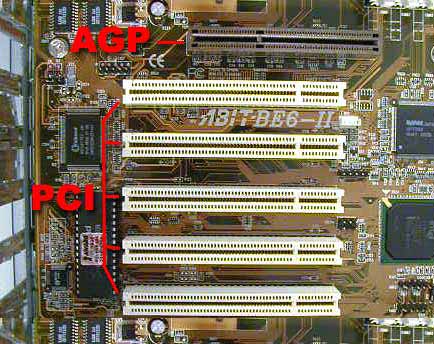Accelerated Graphics Port (AGP) is an interface specification that enables 3-D graphics to display more realistically on ordinary personal computers. Introduced by Intel in 1997, the Accelerated Graphics Port (AGP) is designed to convey 3-D images much more smoothly than is possible on a regular PC and gives the experience of than an expensive dedicated graphics workstation. It is specially useful for three-dimensional (3D) games & videos.
This interface uses the computer’s random access memory (RAM) for displaying 3d images. AGP offers high-speed data transfer to and from the RAM, optimizing the usage of memory and minimizing the amount of memory necessary for high-performance graphics. The AGP main memory use is dynamic, meaning that when not being used for accelerated graphics, main memory is restored for use by the operating system or by other applications.
Intel introduced AGP as a more efficient way to deliver the streaming video and real-time-rendered 3-D graphics. Before that the standard method of delivery for video information was the Peripheral Component Interconnect (PCI) bus (A bus allows multiple packets of information from different sources to travel down one path simultaneously. Information from the graphics card travels through the bus along with any other information that is coming from a device connected to the PCI. When all the information arrives at the CPU, it has to wait in queue till it gets processed by the CPU).
One of the great advantages of AGP is that it isolates the video subsystem from the rest of the PC so there isn’t nearly as much contention over I/O bandwidth as there is with PCI. With the video card removed from the PCI bus, other PCI devices will also benefit from improved bandwidth.

AGP introduces a dedicated point-to-point channel so that the graphics controller can directly access main memory. In addition, to load a texture, a PCI graphics card must copy it from the system’s RAM into the card’s frame buffer. An AGP card is capable of reading textures directly from system RAM using the Graphics Address Remapping Table (GART). GART re-apportions main memory for texture storage, allowing the video card to access it directly.
By increasing the amount of memory available to the graphics card, AGP allows a more efficient process for accessing large textures that could not fit into local memory (Graphics card memory). Before AGP, the video card would have to copy the texture to local memory over the PCI bus, forcing some other texture out of local memory to make space for the new information. AGP eliminates the extra work by allowing the texture to remain in system memory where it can be directly executed on by the graphics chip.
The capability to execute the textures in main memory directly is called Direct Memory Execute, or DIME. The combination of DIME with dynamically-allocated memory sharing allows the most frequently used textures to remain in the local memory on the graphics card, improving overall performance.
AGP provides the graphics card with two methods of directly accessing texture maps in system memory one being pipelining and the other being sideband addressing. In pipelining, AGP makes multiple requests for data during a bus or memory access. PCI makes one request, and does not make another until the data it requested has been transferred. In this way, AGP can hide the memory latencies and this is also called Direct Memory Execute (also knows as DIME) is probably the most important feature of AGP.
Since AGP is a dedicated device, it doesn’t share bandwidth with other devices, whereas the PCI bus does share bandwidth with many devices because of which bandwidth narrows down and devices take more time to act on particular tasks, since information does not reach them a bit slowly. PCI bus supports a data transfer rate of up to 133 MB/s, while AGP (at 66 MHz) supports up to 533 MB/s, which makes the AGP bus substantially faster.
AGP port is usually a brown slot located near to the processor on most motherboards. AGP ports are used exclusively for graphics cards and are set back and keyed differently so that other expansion cards will not fit in them.
To create 3D images, the CPU must perform intensive 3D calculations. The graphics controller processes the texture data and bitmaps. In many cases, the controller must read elements from 7 or 8 different textures and average them into a single pixel on the screen. When this calculation is performed, the pixel must be stored in the memory buffer. Because these textures are so large, they cannot be stored on the video card’s buffer. With AGP, they instead are stored in the main system memory. Because of this, it is recommended that system memory should be large.
The AGP can transfer data at approximately up to 528MB/sec.and the more common PCI (Peripheral Component Interconnect) bus, has a maximum transfer rate of 132MB/sec. AGP’s big bandwidth allows the display of 3d images with ,faster frame rates.
-Image Courtsey http://www.computerhope.com

